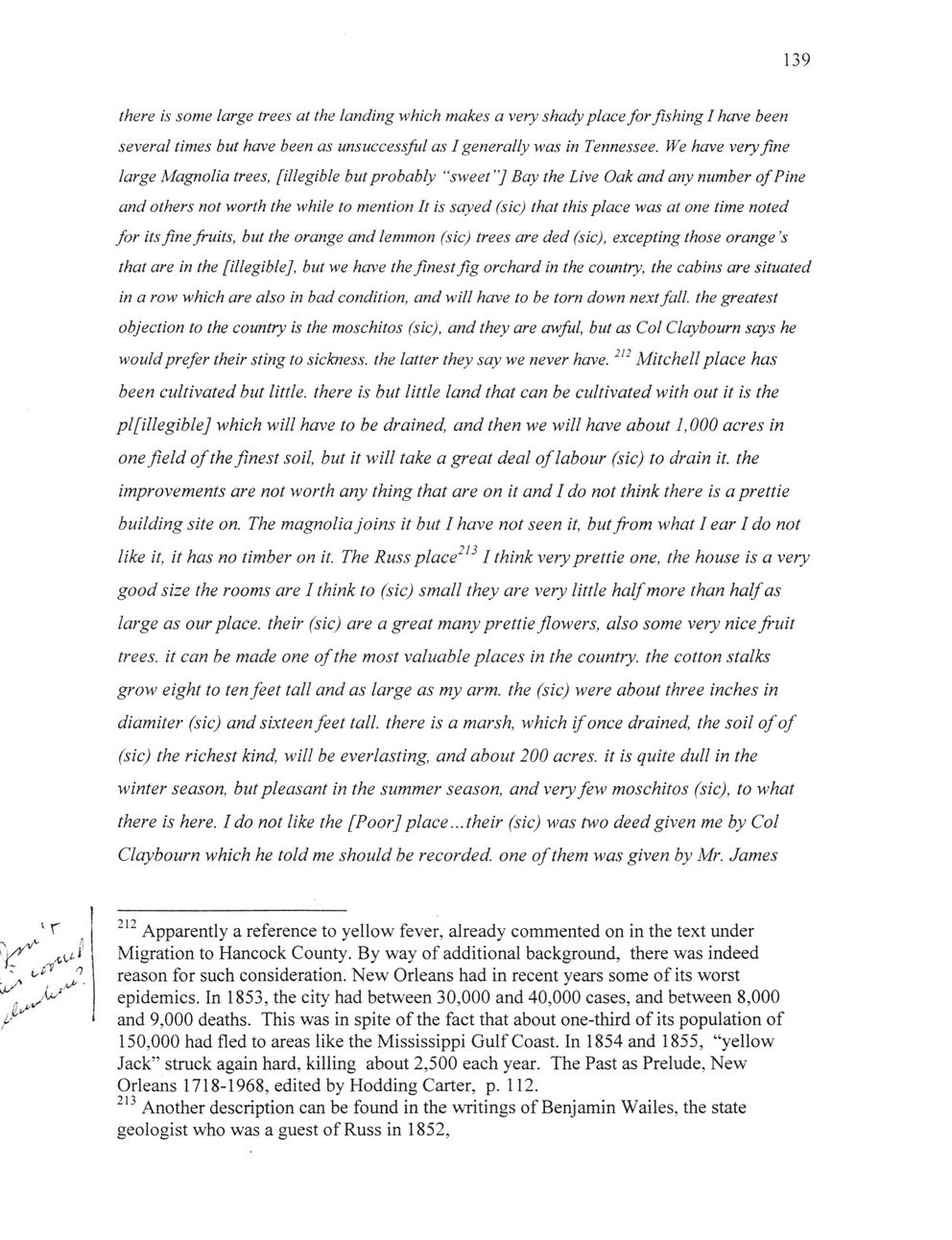This text was obtained via automated optical character recognition.
It has not been edited and may therefore contain several errors.
there is some large trees at the landing which makes a very shady place for fishing I have been several times but have been as unsuccessful as I generally was in Tennessee. We have very fine large Magnolia trees, [illegible but probably ?sweet?] Bay the Live Oak and any number of Pine and others not worth the while to mention It is sayed (sic) that this place was at one time noted for its fine fruits, but the orange and lemmon (sic) trees are ded (sic), excepting those orange?s that are in the [illegible], but we have the finest fig orchard in the country, the cabins are situated in a row which are also in bad condition, and will have to be torn down next fall, the greatest objection to the country is the moschitos (sic), and they are awful, but as Col Claybourn says he would prefer their sting to sickness, the latter they say we never have. 2,2 Mitchell place has been cultivated but little, there is but little land that can be cultivated with out it is the pi [illegible] which will have to be drained, and then we will have about 1,000 acres in one field of the finest soil, but it will take a great deal of labour (sic) to drain it. the improvements are not worth any thing that are on it and I do not think there is a prettie building site on. The magnolia joins it but I have not seen it, but from what I ear I do not like it, it has no timber on it. The Russ place213 I think very prettie one, the house is a very good size the rooms are I think to (sic) small they are very little half more than half as large as our place, their (sic) are a great many prettie flowers, also some very nice fruit trees, it can be made one of the most valuable places in the country, the cotton stalks grow eight to ten feet tall and as large as my arm. the (sic) were about three inches in diamiter (sic) and sixteen feet tall, there is a marsh, which if once drained, the soil of of (sic) the richest kind, will be everlasting, and about 200 acres, it is quite dull in the winter season, but pleasant in the summer season, and very few moschitos (sic), to what there is here. I do not like the [Poor] place... their (sic) was two deed given me by Col Claybourn which he told me should be recorded, one of them was given by Mr. James 212 Apparently a reference to yellow fever, already commented on in the text under Migration to Hancock County. By way of additional background, there was indeed reason for such consideration. New Orleans had in recent years some of its worst epidemics. In 1853, the city had between 30,000 and 40,000 cases, and between 8,000 and 9,000 deaths. This was in spite of the fact that about one-third of its population of 150,000 had fled to areas like the Mississippi Gulf Coast. In 1854 and 1855, ?yellow Jack? struck again hard, killing about 2,500 each year. The Past as Prelude, New Orleans 1718-1968, edited by Hodding Carter, p. 112. Another description can be found in the writings of Benjamin Wailes, the state geologist who was a guest of Russ in 1852,

Jackson, Andrew 013